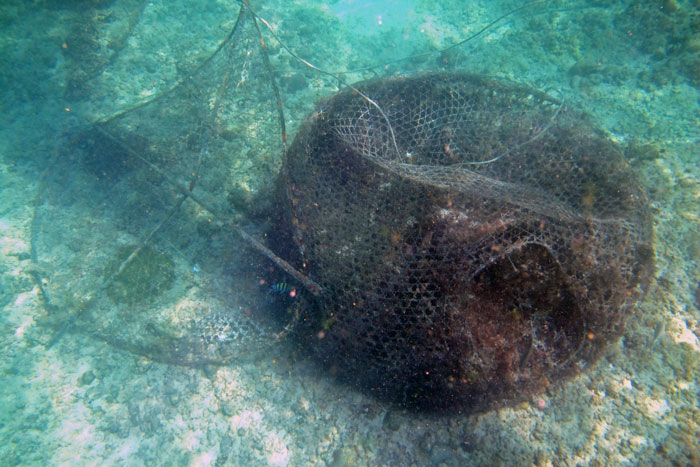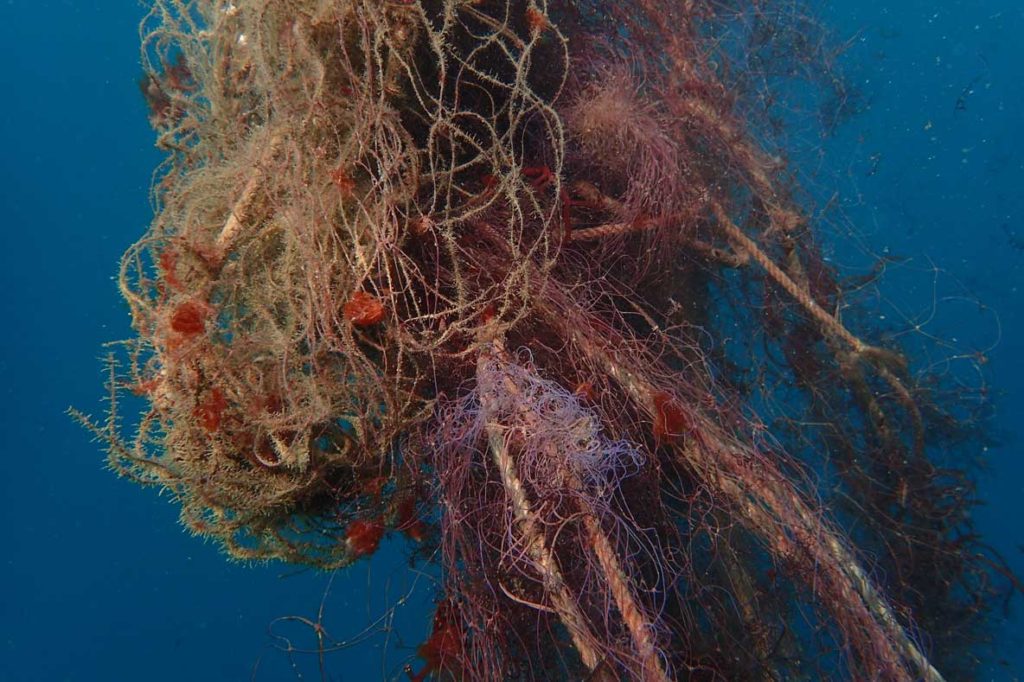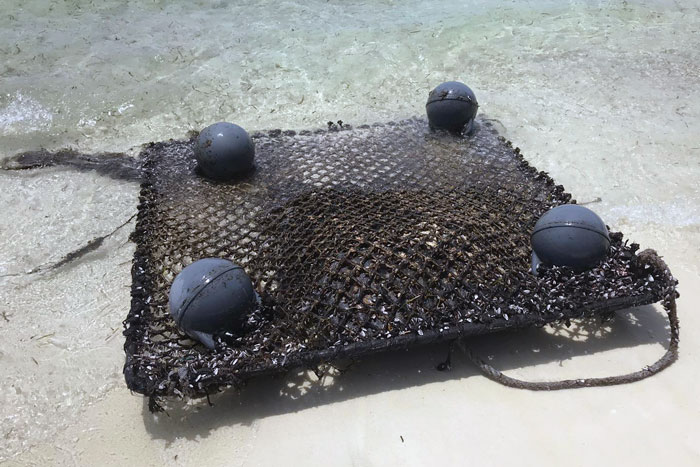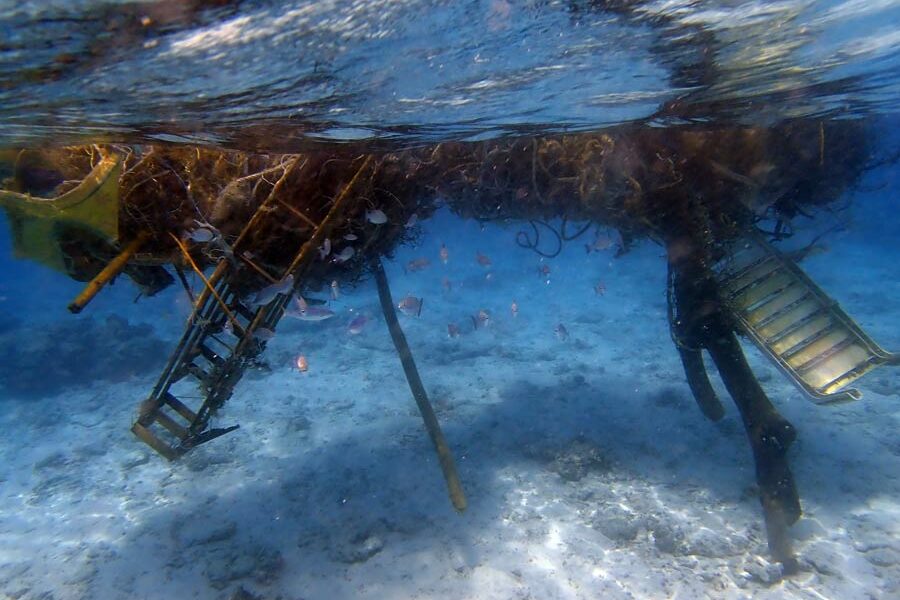Ghost gear is fishing gear that has been abandoned, lost or discarded (ALDFG) at sea, in ports and at beaches. The term ‘ghost gear’ refers to all types of derelict fishing gear, whether that be nets, lines, traps and pots or fish aggregating devices (dFADs).


Ghost gear poses a grave threat to the marine environment, fishermen and local communities. Fishing gear is often targeted at one species or one group of species. However, when that gear becomes abandoned, lost or discarded, it does not discriminate. Whilst drifting with ocean currents, it will indeterminately catch and kill any marine life in its path. Consequently, ghost gear contributes to both the depletion of fish stocks around the world and the decline of many protected and endangered marine species.
Ghost gear take the form of a single net or line, or it may be a mixture of various materials. For example, some gear will drift with ocean currents and become entangled with other gear or marine debris, such as plastics, forming a conglomerate. These conglomerates can be particularly destructive due to their complex nature. Many marine species become entangled in these and, unfortunately, never make it out. In the Maldives, we often find olive ridley turtles with life-threatening injuries after being entangled in conglomerates of ghost gear, having likely been stuck there for months on end.
References
- Smolowitz, R.J., Corps, L.N. and Center, N.F., 1978. Lobster, Homarus americanus, trap design and ghost fishing. Marine Fisheries Review, 40(5-6), pp.2-8.



